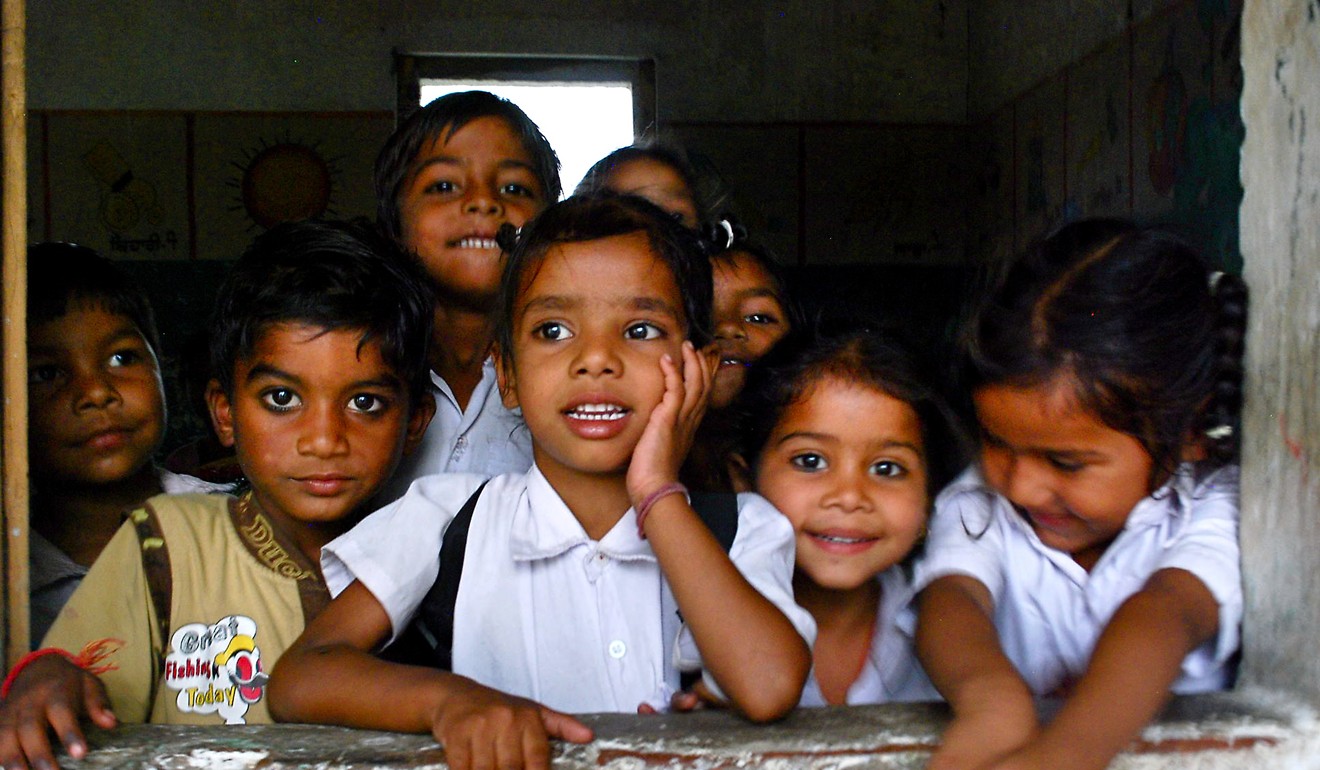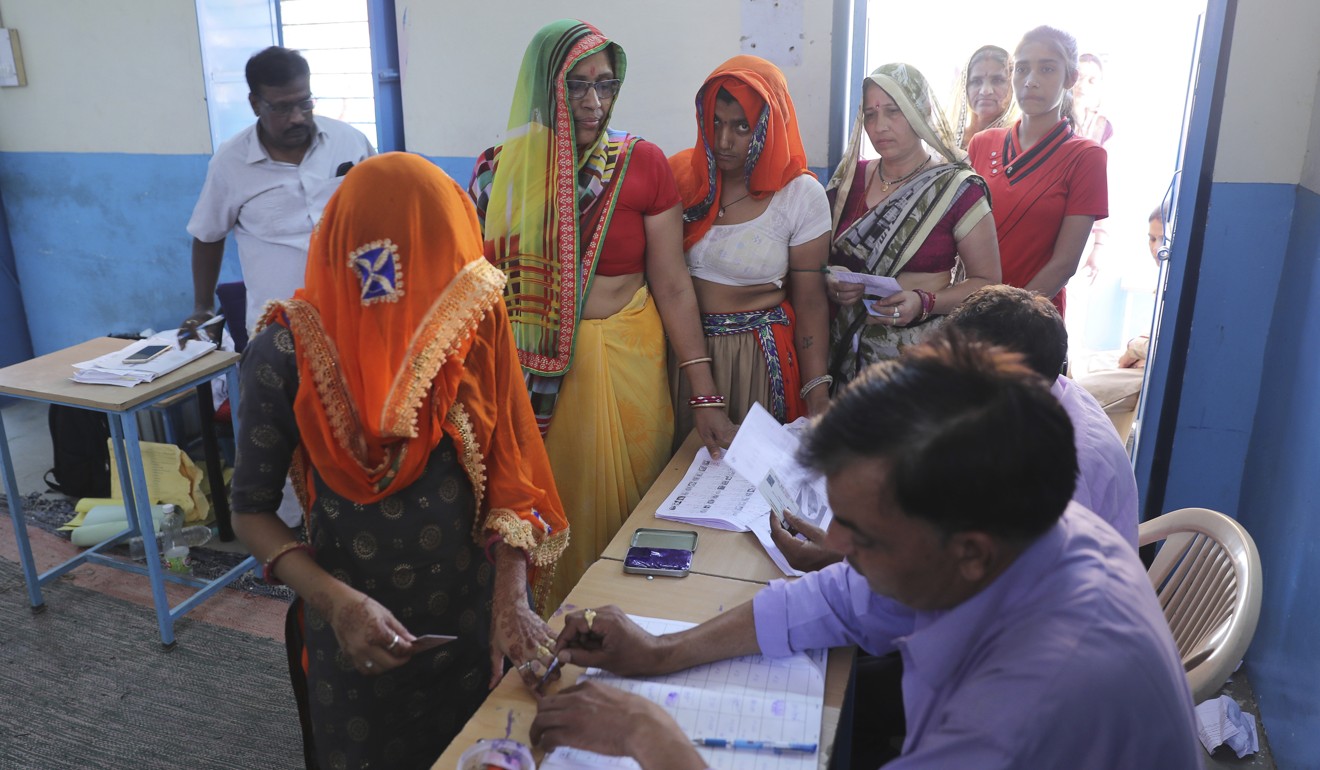
India’s women must hold politicians to their promises in this election – their power at the ballot box is rising
- The major parties have gone to great lengths to woo the nation’s women with promises of a grand female future, but similar pledges in the past have fallen flat
As India votes in general elections, its parties are keeping a close eye on the role women will play. When both the ruling Bharatiya Janata Party (BJP) and opposition Indian National Congress (INC) released their election manifestos, it was clear the power of the female voting bloc was finally being taken seriously. For starters, they both promised a parliament that would be 33 per cent women.
This group could be the key to winning this election. In 2014, some 16 of India’s 29 states saw an increase in female turnout, bringing the nationwide figure to 65 per cent, compared to 67 per cent for men. That number is only expected to rise further this time around.
Women are under-represented in India’s political landscape not just because of these factors; rather, it is because gender roles run so deep within the veins of Indian society. This underrepresentation will need years of conscious effort and open doors to erase. Even at panchayat (village) level, where a 33 per cent quota for women applies, the ‘sarpanch pati’ – the panchayat leader’s husband – controls the politics of the area. A bill was passed by India’s upper house back in 2010, but the lower house is still yet to follow suit despite members of both parties openly supporting the quota.

One cannot help but be sceptical of these promises from the BJP and INC given both only had women on 8 per cent and 12 per cent of their tickets in the last election, respectively. The 33 per cent parliamentary quota was also in their 2014 manifestos.
Another pre-election pledge from each party this year was to help women get into the workforce by introducing more childcare facilities. Jobs can be hard to come by in India, and unemployment reached a 45-year high in the 2017-18 financial year, of 6.1 per cent. Of the 133 million young adults being given the chance to vote for the first time this year, 73 per cent live in villages and 63 million are young women. The parties are promising childcare facilities for every anganwadi, or courtyard shelter, in rural India, which small communities rely on for basic services.
Communism in India: dead or just waiting for young saviours?
The BJP has vowed to “ensure the number of childcare facilities is increased threefold by 2022”, while the INC says it would scrap laws prohibiting women from working night shifts, ensure safe transport facilities and set up women’s hostels in India’s special economic zones.
But the devil of these plans is in the detail. The BJP plans to use existing facilities for its nursery programme, and its current anganwadi employees are severely underpaid. The INC meanwhile has released no details.

During 2014 campaigning the BJP said it planned to help women into work by creating dedicated industrial training institutes and setting up women’s wings in existing ones. While several centres were set up in 2015 and millions of rupees earmarked for improvements, none were exclusively for women.
The biggest issue covered in both manifestos is women’s safety. When India had its #MeToo moment last year, it became evident that workplace security was lacking. Women from several industries – politics included – shared stories of harassment. The National Crime Records Bureau’s 2016 report showed offences against women had increased 34 per cent between 2012 and 2015.
How overseas Indians could get Narendra Modi re-elected – without casting a vote
The INC has promised to establish “a separate investigative agency to investigate heinous crimes against women and children”, while the BJP wants “time-bound investigations” and “fast-track courts” to handle these offences.
There was a 60 per cent rise in reports of rape after a high-profile gang rape in 2012 of a 23-year-old student in Delhi, which prompted soul searching across the country. By the end of 2016, about 133,000 rape cases were still pending in the courts. The government has already set up 1,023 fast-track courts for rape cases under an initiative called the Nirbhaya Fund, named after the victim in the 2012 case. Unless instances of rape and harassment dramatically dry up, most of these cases will never see the light of day.

Worth more evaluation is what the government is doing to prevent rape. It has introduced a self-defence programme for girls in schools across the country under its Samagra Shiksha scheme, which is a step in the right direction. The death penalty for raping children under the age of 12 has come into effect – whether it will deter would-be rapists is yet to be seen.
The BJP has also launched a “Save the daughter, educate the daughter” scheme to curb female feticide. It aims to address India’s distorted sex ratio in a country that largely worships newborn boys over girls. Officials hope to spread awareness of the problem, widen access to health care and improve literacy, and the scheme was initially praised by activists and politicians. But of the funding allocated to the programme over the last five years, 56 per cent has been used for advertising – the equivalent of US$22 million. Less than 25 per cent was used on the ground.
Exploiting Islamophobia is an election-winning tool in India
The money has largely been pumped into producing propaganda. Every time someone listens to a campaign message on the radio or sees a billboard, he or she is reminded that the BJP government “cares”.
But does it? And does the INC? In a country where a girl’s right to education depends disproportionately on her simply staying alive, how much power do women really have to influence politics? As Indian women vote, they must not only take into account the pledges made, but also hold the parties accountable for those promises.

